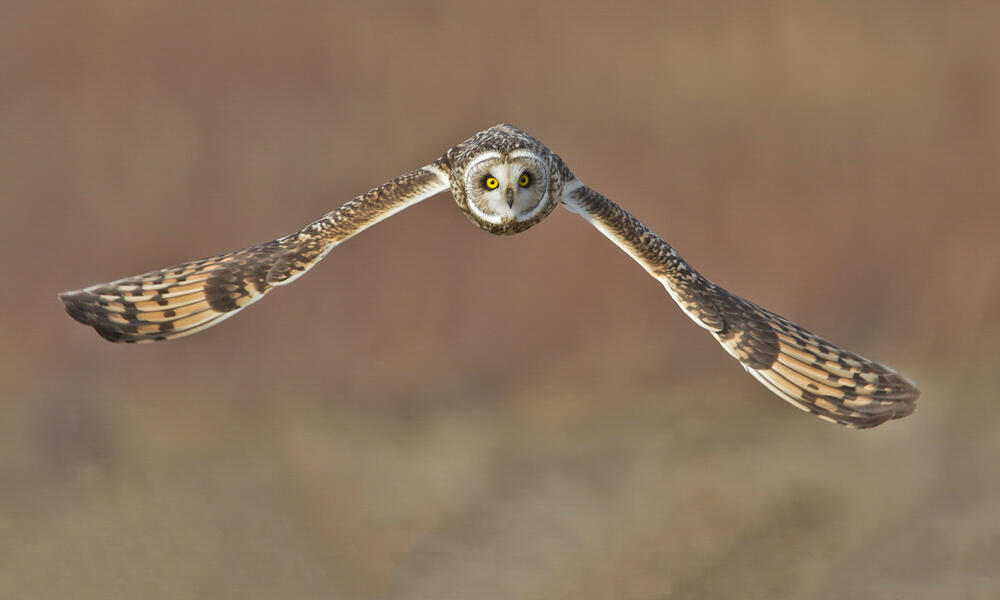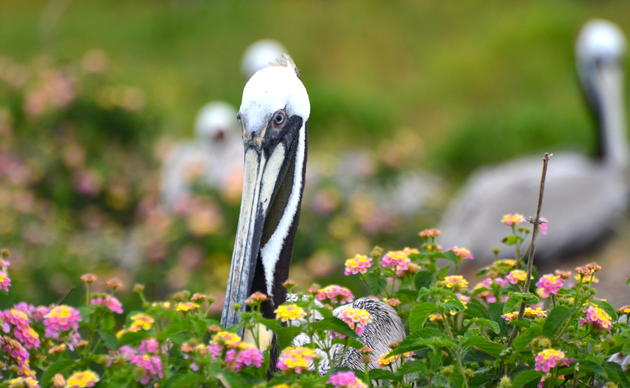It is another pre-dawn start to my day. I’m standing sentinel among the quietude of expansive grazing lands bordering the northeastern shore of Carancahua Bay. Waiting and listening, I strain to hear the familiar hoot of distant Great-horned Owls while keeping eyes peeled for the passing silhouette of Short-eared Owl flying silently above the bluestem and Bermuda grass.
This is how every Audubon Christmas Bird Count kicks off – beginning an organized but frantic effort to observe and tally every species and individual bird within a 15-mile wide circle. Although there are dozens of CBCs to conduct across Texas each winter, this is very much a community-based project that will require dozens of birders, observers, and volunteers at each count to pull off. It is a tradition that goes back over 100 years with origins focused on grassroots conservation and community science.
Around the turn of the 20th century, conservationists were becoming increasingly concerned with the unconstrained consumption and waste of wildlife in North America. What was once thought to be a limitless supply of meat and sport had, indeed, become over-harvested. Familiar characters were being lost from their forest and coastal haunts. At the time, it was common for hunting parties to come together to engage in contests to see who could bag the most species and/or numbers of animals in a day, including birds. Out of concern, a small group of bird enthusiasts offered a non-consumptive alternative: Why not compete to see how many birds we can observe alive and unharmed? This question, and the efforts that followed, provided an opportunity to tickle the competitive itch without contributing to the continued decline of wildlife.
Today’s long-standing Christmas Bird Count tradition was built upon this foundation – which challenged the status quo of the times. It helped pave the way for one of the longest-standing community science efforts in existence while promoting place-based conservation engagement and pride. Audubon and its partners use these data to monitor bird populations, identify needs, inform policy, and guide conservation investment. Participating communities use these events to highlight local conservation assets and promote ecotourism. It is why so many of us look forward to that brief window when we’ll happily suffer harsh winter weather, exhaustion, and fatigue to be participants in one of the most meaningful conservation activities of the year.
It’s now dusk and I’m driving back to the countdown dinner where everyone gathers to tally their lists and see where we finished as a CBC team. Thankfully fresh bar-b-que and hot coffee are being served. Our compiler has reviewed all the lists and declares that, together, we observed just over 180 species – an excellent tally that will rank 4th in the state of Texas! Although our total species count was high, we note that the number of individuals observed were lower than normal leading to whispers of lingering concern from the impacts of Winter Storm Uri. Thankfully, we now have data and the opportunity to assess through science the impacts to birds.
How you can help, right now
Join Audubon Texas Today
Becoming a member supports our local work protecting birds and the places they need.
Consider a Legacy Gift for Texas
Planned gifts and bequests allow you to provide a lasting form of support to Audubon Texas.
Subscribe to Our Newsletter
Subscribe to our newsletter for updates about Audubon Texas's conservation work, and news about our activities and local events.





